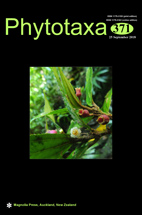Abstract
Apios chendezhaoana, a new combination derived from Sinolegumenea chendezhaoana, is recognized by both morphological and molecular evidence. It is a new member within Apios, and it is also an endemic and endangered species from East and South China. Phylogenetic analyses indicate that it could be sister to A. fortunei, but morphologically it differs from all its allies by its broad triangular leaflets with caudate apices, white corolla, pink markings on the lower part of the keel, and dilated style with tufted hairs beneath the stigma. We provide a detailed description, photographs, illustrations, and distribution map. We also estimate its conservation status according to IUCN criteria. A key to Apios is also provided, together with a brief revision.

